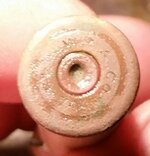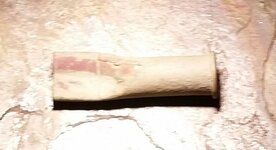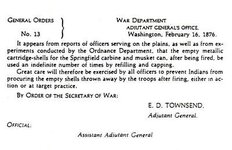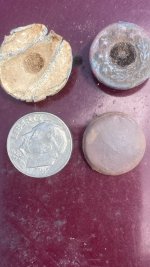Acejeckel
Sr. Member
- Jul 18, 2009
- 268
- 589
- Detector(s) used
- White's V3I, DFX, M6, Minelab Equinox 800
- Primary Interest:
- Metal Detecting
Hello everyone I got out for a few hours after work yesterday to a spot that dates pre 1845 located on the Detroit river. I wasn't finding much then I got one of them jumpy signals one of them ones you know you have to dig just to besure well I'm glad I did I found a 45-70 rifle cartridge with a head stamp that says W.R.A. Co (Winchester Repeating Arms Company) After taking several pictures and I got one that is hard to read but you can just make it out. I searched the forum and found some good I.D to what I found.






